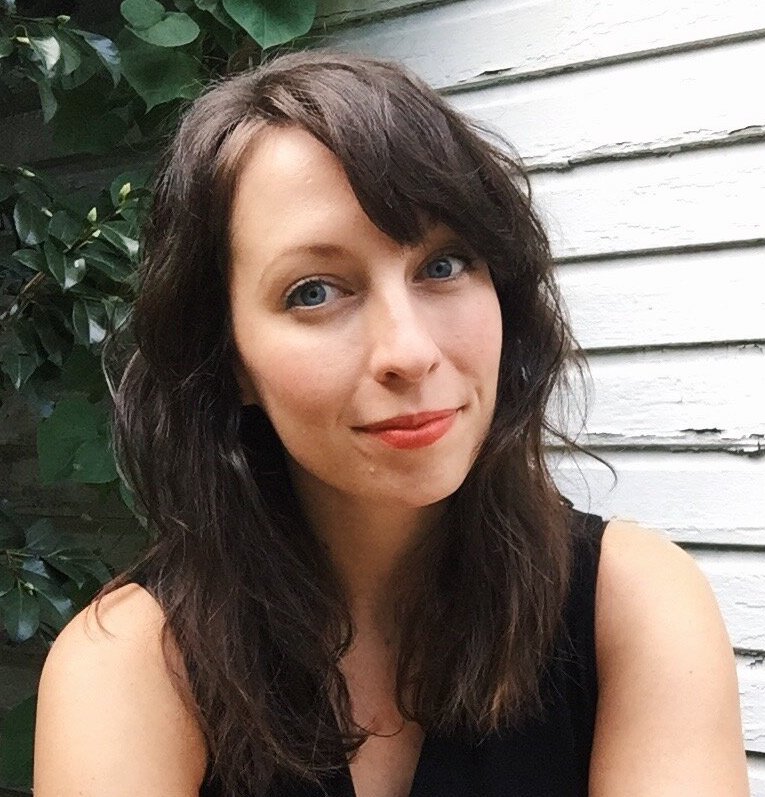
My Learning Style Is A Cue, Not A Label
As a student, I always took notes in every class, relishing color-coded pens and an elaborate highlighting system that left my notebooks saturated and damp with neon ink. I loved to read, write, and draw, and I often worked out word problems into little images on my test papers.
“This designation became a key piece of the puzzle of who I was, integral to my very identity: I was a visual learner. And I believed it for almost fifteen years.”
“Your daughter is a visual learner,” my fourth-grade teacher Mrs. Williams announced during a parent-teacher conference. It was said with authority, from an expert on the subject, and we didn’t question it. This was important intel: I would need books and charts and graphs to have educational success. I needed more highlighters, possibly Post-Its.
This designation became a key piece of the puzzle of who I was, integral to my very identity: I was a visual learner. And I believed it for almost fifteen years.
As I transitioned from school to the workforce, I continued to diligently take elaborate notes in every class or meeting I attended. I spent a small fortune on office supplies so that I could tag, highlight, and write out schedules in multiple notebooks. I kept three working calendars with nearly identical information, two physical and one digital, that I painstakingly maintained through hours of careful attention. This was the only way I could remember everything, and I was so grateful that I had the knowledge of my learning style to help me succeed.
Then, an identity-shattering revelation came during a two-day professional development event in the ballroom of a Holiday Inn. I was working for a literacy nonprofit, and in an adult education unit about adapting the ways we delivered information, the learning models came up. I nodded along during the slides, raising my hand to answer all the prompts about visual learners. I doodled a big yellow star on the top of my note page.
“When the trainer passed my notecard-strewn table, she gestured at the scattered pens and said, ‘And here we have a classic kinesthetic learner.’”
But when the trainer passed my notecard-strewn table, she gestured at the scattered pens and said, “And here we have a classic kinesthetic learner.”
I blinked. I tried correcting her, explaining that no, actually I was a visual learner. But as we talked through my process, it became clear that what I was doing when I copied out all those notes — duplicating the same information into different formats, creating distinct sensory experiences with various writing implements, and never, not once, referring back to the information itself and just reading it — that I was not engaging in visual learning strategies at all. I was using kinesthetic tools.
And I needed to re-evaluate everything.
Where did the learning styles come from?
If you are a millennial or younger, you probably encountered the “learning styles” concept in your school days as well: The three identified types — visual, auditory, and kinesthetic — are together called the VAK learning style typology. The concept proposes that everyone learns information best through applications of one of the three named styles, and offers specific tools and methods for each learning type.
- Visual learners learn best from information delivered through charts, graphs, images, or text
- Auditory learners fare better from listening to lectures, speeches, mnemonics, or recordings
- Kinesthetic (sometimes called tactile) learners benefit from sensory experience and hands-on techniques
“The concept proposes that everyone learns information best through applications of one of the three named styles, and offers specific tools and methods for each learning type.”
The VAK learning style typology reached peak popularity in schools during the 1980s, but its origins can be traced back to the early 1900s, when it was developed by psychologists to measure word and mental imagery recall. And while dozens of learning style typologies have been developed over the years, the VAK model has persisted with teachers, cropping up in the pedagogy of such prominent educators as Maria Montessori. A 2014 study found that well over 90% of the teachers surveyed believed in the VAK learning style typology.
“And yet despite its popularity, the psychological community treats the concept with wariness and skepticism, in some cases dismissing it outright as a myth. “
And yet despite its popularity, the psychological community treats the concept with wariness and skepticism, in some cases dismissing it outright as a myth.
The reason for this can be attributed to the model’s original application for students with learning differences. The ideational types and learning methods were applied as assessments for children struggling to read, particularly for conditions such as dyslexia. The kinesthetic techniques created by Grace Fernald were meant specifically to be used for remedial reading instruction.
Then during the 1960’s, the VAK learning style typology was brought to urban schools, where it was applied more broadly to address inequities in instruction for students of color. By the next decade, educators had designed assessment inventories and diagnostics that were given to all students across subjects. The 80s saw the model enter the mainstream conversation thanks in part to Howard Gardner’s multiple intelligences theory. By the end of the century, free learning style tests were available online. The concept solidified into the comfortable and imperfect realm of common knowledge, despite it still having little empirical evidence or support from the psychology community.
Tools over types
As an elder millennial, I love a good personality test. I am just as fluent in the acronyms (MBTI: ENFP) and numbers (Enneagram: 7) and pop cultural or astrological categories as the next person who spent a good part of the aughts taking certain web quizzes to tell me more about myself. (I’m a Ravenclaw, half Carrie and half Charlotte with a dash of Miranda, and Scorpio-Pisces-Scorpio thankyouverymuch.)
“While so many of these concepts can open you up to new pathways to better understand yourself, they can also close off other pathways before you even get the chance to view the road.”
What I’m saying is that I get the draw. We want to understand who we are, what we believe, how we tend to move through the world, and why we feel the way we do. And it’s not always easy to suss it out on our own.
Plus, online quizzes are very fun.
But none of these assessments are perfect. Which is why it’s important to see them as tools at your disposal rather than a type that defines you. Because while so many of these concepts can open you up to new pathways to better understand yourself, they can also close off other pathways before you even get the chance to view the road.
Remember Mrs. Williams, the teacher who had “diagnosed” me as a visual learner in elementary school? She had also casually defined me as “right-brained” in the same meeting, concluding that I was therefore “naturally bad at math.”
So I went through the rest of my educational experience believing it was true: I was bad at math. It was not an idea to be tested, but a law to be followed.
But my grades didn’t exactly follow suit; they weren’t spectacular, though they weren’t bad. I sometimes even found myself enjoying the subject. And then I tested out of the mandatory math classes required for my liberal arts college. Which made me wonder if maybe I wasn’t actually “bad at math” after all.
“These labels that had initially felt like neat and orderly road signs suddenly appeared very faded and old, covered in graffiti and bird poop.”
Mrs. Williams had told me I was a visual learner and right-brained, but she also almost always had lipstick on her teeth and periodically called me “Bethany.” She was a prominent cheerleader of my oil pastel self-portraits, and she let me be a little chatty in class instead of scolding me for my naturally loud voice like other teachers. She was, in other words, a totally normal person, not an infallible authority with the last word on my brain. But her words had branded themselves on my very understanding of my selfhood.
I’m sure there were elements of truth to what she saw in me, but I had internalized her labels as the final word. But I grew up, and got new information. I changed. And these labels that had initially felt like neat and orderly road signs suddenly appeared very faded and old, covered in graffiti and bird poop. The signs could still generally tell me where to go, but I needed to start looking around at other cues to make a more reliable roadmap of my own.
What if instead of being labeled, we were offered tools? Would it feel less jarring to have these tools recategorized, rather than having to reckon with our identities?
Learning how to learn
While I don’t necessarily identify as one type of learner anymore, I do find that knowing about the recommended learning style techniques for some tendencies I have has been hugely helpful in every area of my life.
“Knowing about the recommended learning style techniques for some tendencies I have has been hugely helpful in every area of my life. “
Learning is a lifelong part of our daily lives; it does not stop when we leave school. I am constantly looking up how to do something, whether it’s figuring out how to register my personal business or how to finally, once and for all, properly poach an egg.
I’m also always seeking knowledge, asking Google to explain what a blue dragon sea slug is or what ibuprofen actually does to the body. Because I know about learning styles and the different tools tied to each one, I know that I prefer to process some information, like how to play a board game or how to make a GIF in Procreate, by doing instead of reading about it or listening to an explanation.
This knowledge has helped on the other side too, when I have to deliver information. If I can tell that my daughter or husband aren’t really processing my verbal instructions for how to give the dog a pill while I’m out of town, maybe I will draw it in a comic, or make a short video, or act it out in a game with my daughter first. These are tools that make us better communicators, and even help to afford us grace for when something that “seems easy” just doesn’t land on the first try.
“These are tools that make us better communicators, and even help to afford us grace for when something that ‘seems easy’ just doesn’t land on the first try.”
Learning, after all, is tied to ideas about intelligence, which can bring up childhood experiences of failure and shame that are hard to shake. Learning is also, in this writer’s opinion, tied to effort, resiliency, and humility. And those things can be uncomfortable and hard. It’s no wonder we love a good diagnostic quiz!
While it seems like the perfect shortcut to rely on a seemingly straightforward assessment to present you with a label and a clear set of action items to win at life, nothing is ever quite so simple. But if we embrace curiosity instead, we can remain open to where the experience takes us, learning more about our true selves, and making space for growth and change along the way. 🗺️
Have you ever been labeled with a certain learning style? What are some tools and techniques you’ve used to better engage with the world around you? Let us know in the comments!
Stephanie H. Fallon is a writer originally from Houston, Texas. She has an MFA from the Jackson Center of Creative Writing at Hollins University. She lives with her family in the Blue Ridge Mountains of Virginia, where she writes about motherhood, artmaking, and work culture. You can find her on Instagram or learn more on her website.




